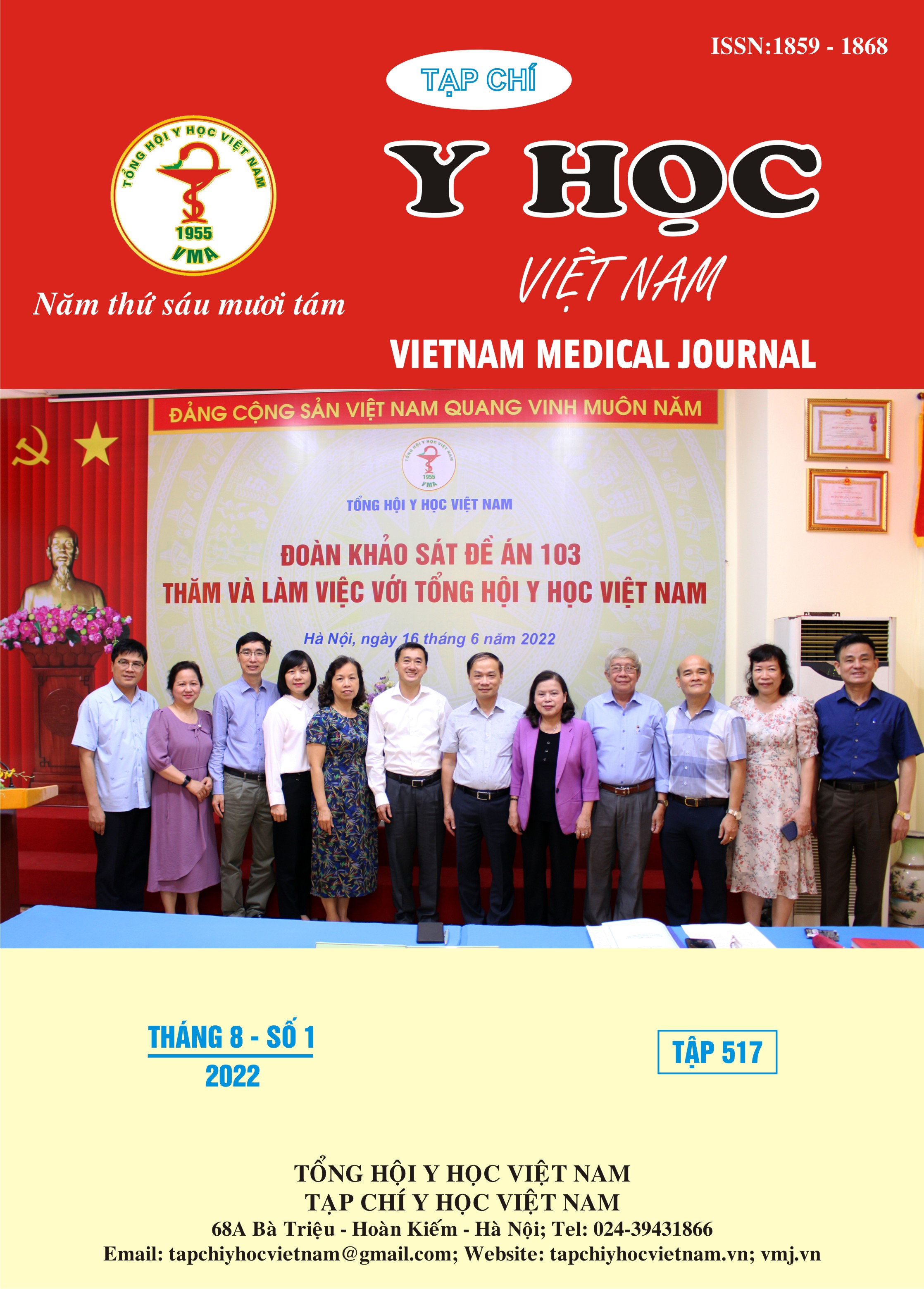SO SÁNH KẾT QUẢ LÂU DÀI GIỮA HOÁ XẠ TRỊ ĐỒNG THỜI PHÁC ĐỒ FOLFOX SO VỚI PHÁC ĐỒ CF TRONG ĐIỀU TRỊ UNG THƯ THỰC QUẢN GIAI ĐOẠN KHÔNG MỔ ĐƯỢC TẠI BỆNH VIỆN K VÀ BỆNH VIỆN UNG BƯỚU TỈNH THANH HOÁ
Nội dung chính của bài viết
Tóm tắt
Mục tiêu: So sánh kết quả điều trị ung thư thực quản giai đoạn không mổ được bằng hóa xạ trị đồng thời phác đồ FOLFOX và CF; độc tính và tác dụng không mong muốn của phác đồ. Đối tượng và phương pháp: Nghiên cứu can thiệp tiến cứu, có nhóm chứng trên 102 bệnh nhân ung thư thực quản giai đoạn không mổ được điều trị hóa xạ trị đồng thời chia làm 2 nhóm: nhóm nghiên cứu điều trị với phác đồ FOLFOX và nhóm chứng điều trị với phác đồ CF kết hợp tia xạ liều 50Gy/5 tuần, phân liều 2Gy/ngày. Kết quả: Tỷ lệ sống thêm toàn bộ 12 tháng, 18 tháng và 24 tháng ở nhóm nghiên cứu là 90,1%, 64,7% và 45,1%; ở nhóm chứng là 84,3%, 54,9% và 39,2%; p = 0,56. Sống thêm toàn bộ trung bình là 19,9 ± 0,81 tháng so với 18,4± 0,79 ở nhóm chứng, p = 0,67; sống thêm không tiến triển trung bình là 18,5± 0,89 tháng so với 17,2± 0,90 ở nhóm chứng, p = 0,59. Một số yếu tố ảnh hưởng đến kết quả điều trị là kích thước u, giai đoạn bệnh, gián đoạn điều trị và sự đáp ứng điều trị. Độc tính (huyết học , gan , thận, các cơ quan khác) đa phần gặp độ I, II. Kết luận: Phác đồ FOLFOX so với phác đồ CF cho hiệu quả tương đương về tỷ lệ đáp ứng, thời gian sống thêm toàn bộ cũng như sống thêm không tiến triển và có phần trội hơn trên nhóm bệnh nhân giai đoạn muộn; đồng thời phác đồ FOLFOX ít ảnh hưởng lên toàn trạng, chức năng thận và ít gây buồn nôn, nôn, rụng tóc một cách rõ rệt so với phác đồ CF.
Chi tiết bài viết
Từ khóa
Hoá xạ trị đồng thời, ung thư thực quản
Tài liệu tham khảo
2. NCCN. Esophageal and Esophagogastric Junction cancers. NCCN Guidelines version 2.2022. 2022.
3. Bùi Quang Huy. Đánh giá kết quả xạ trị điều biến liều thể tích hình cung (VMAT) kết hợp hóa trị trong ung thư thực quản 1/3 giữa dưới giai đoạn cT3,4N0-2M0. Đại học Y Hà Nội; 2020.
4. Conroy T và cộng sự. Definitive chemoradiotherapy with FOLFOX versus fluorouracil and cisplatin in patients with oesophageal cancer (PRODIGE5/ACCORD17): final results of a randomised, phase 2/3 trial. Lancet Oncol 2014;15:305-314.
5. Nguyễn Đức Lợi. Đánh giá hiệu quả phác đồ hoá xạ trị đồng thời và một số yếu tố tiên lượng ung thư biểu mô thực quản giai đoạn III,IV tại Bệnh viện K. Trường Đại học Y Hà Nội; 2015.
6. Hàn Thị Thanh Bình. Nhận xét đặc điểm lâm sàng, mô bệnh học và kết quả điều trị ung thư biểu mô thực quản tại Bệnh viện K giai đoạn 1998-2004. Đại Học Y Hà Nội; 2004.
7. Honing J và cộng sự. A comparison of carboplatin and paclitaxel with cisplatinum and 5-fluorouracil in definitive chemoradiation in esophageal cancer patients. Ann Oncol. 2014;25(3):638.
8. Zhang P và cộng sự. Concurrent cisplatin and 5-fluorouracil versus concurrent cisplatin and docetaxel with radiotherapy for esophageal squamous cell carcinoma: a propensity score-matched analysis. Oncotarget. 2016;7(28).


